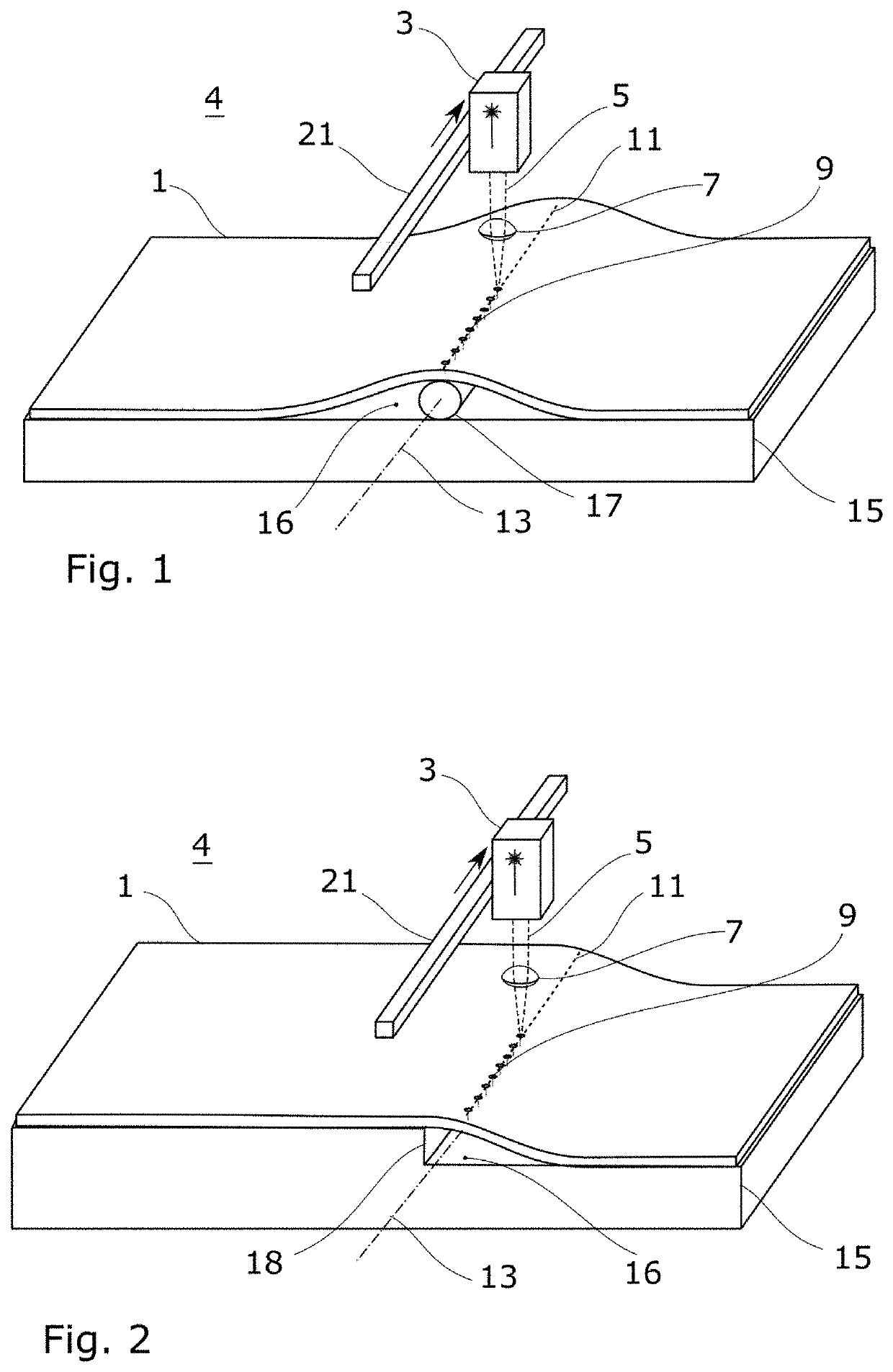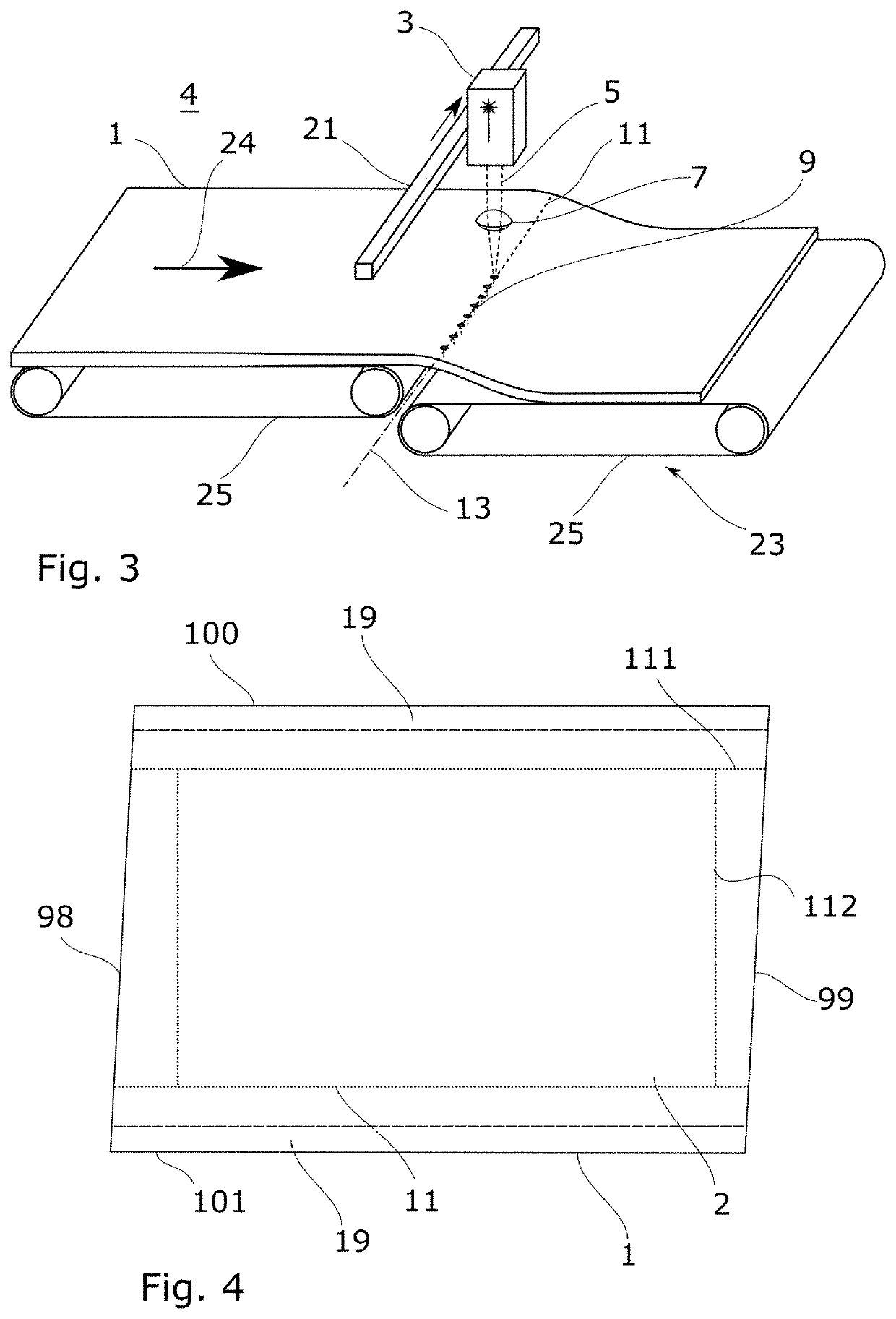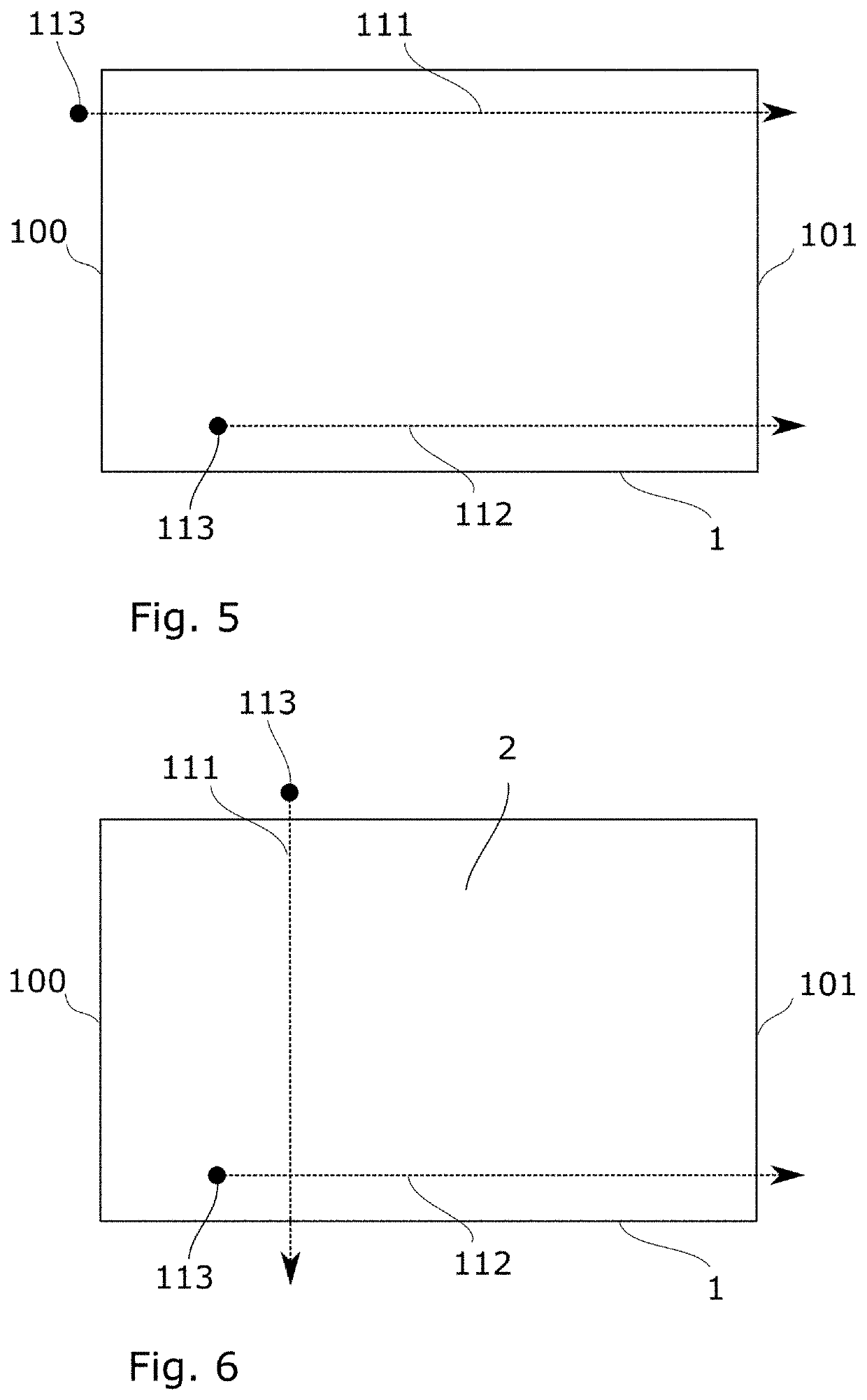Method and apparatus for cutting glass sheets
- Summary
- Abstract
- Description
- Claims
- Application Information
AI Technical Summary
Benefits of technology
Problems solved by technology
Method used
Image
Examples
Embodiment Construction
[0030]In FIG. 1 an apparatus 4 for carrying out the method described herein is shown. In general, without being restricted to the specific example shown, the apparatus 4 for separating glass sheets 1 with a thickness of at most 300 μm, comprises an ultrashort pulse laser 3 for irradiating a glass sheet 1 with a pulsed laser beam 5, wherein the laser beam 5 has a wavelength for which the glass is transparent, so that the laser beam 5 can traverse the glass sheet 1, as well as a focusing optics 7 to focus the laser beam 5, so that the light intensity of the laser beam 5 inside the glass sheet 1 becomes so high that the laser beam 5 leaves a filamentary damage 9 along its path through the glass sheet 1, and a device 21 to move the laser beam 5 and glass sheet 1 relative to each other, such that the pulses of the laser beam 5 insert filamentary damages 9 next to one another along a path 11 running on the glass sheet 1, as well as a device for exerting tensile stress on the glass sheet 1...
PUM
| Property | Measurement | Unit |
|---|---|---|
| Thickness | aaaaa | aaaaa |
| Length | aaaaa | aaaaa |
| Tensile stress | aaaaa | aaaaa |
Abstract
Description
Claims
Application Information
 Login to View More
Login to View More - R&D
- Intellectual Property
- Life Sciences
- Materials
- Tech Scout
- Unparalleled Data Quality
- Higher Quality Content
- 60% Fewer Hallucinations
Browse by: Latest US Patents, China's latest patents, Technical Efficacy Thesaurus, Application Domain, Technology Topic, Popular Technical Reports.
© 2025 PatSnap. All rights reserved.Legal|Privacy policy|Modern Slavery Act Transparency Statement|Sitemap|About US| Contact US: help@patsnap.com



